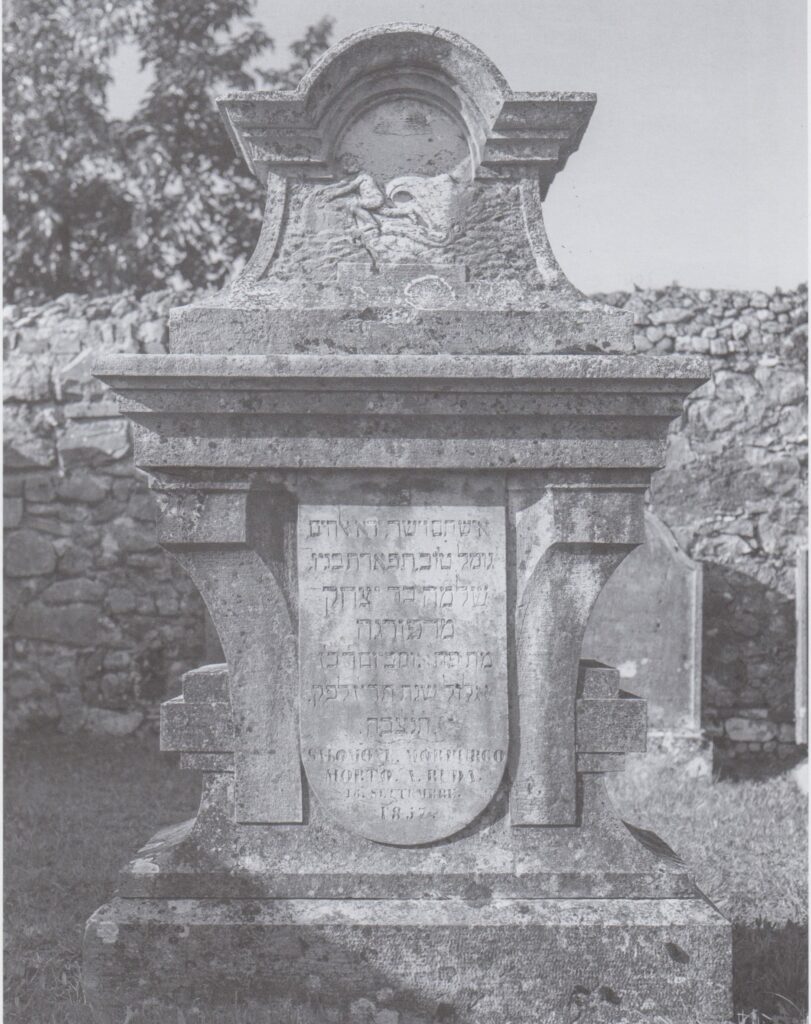Learn More

The present Jewish cemetery was created following the Josephine and Napoleonic laws of the late 1700s/ early 1800s, which stated that human remains could only be buried outside inhabited areas. We have no traces of other burial places for Gradiscan Jews.
The oldest tombstones (matzevah) date back to 1805 and belong to Malka (Regina) widow of Menachem Morpurgo; she was buried outside the city walls and moved to the Jewish cemetery about a decade later.
The cemetery covers an area of around 2000 square metres and contains about 89 tombs. Until 1851 the tomb engravings were only in Hebrew, later Italian, German or bilingual markings appear. There is only one example of a tombstone with an inscription in Hebrew and Latin, dedicated to Isacco di Samuele Luzzatto, who died in 1855.
Unfortunately, many stones are no longer legible, but often brief poetic quotations were used, with biblical citations and praises for the dead. The tombs are simple and fairly plain; there are no floral decorations, but stones and “shalom” wishes or the acronym תנצבה (T.N.TZ.B.HA), which means “May his soul be bound in the bundle of life”.
The most common names are those of the ancient Jewish families of the city: the Morpurgos, whose family symbol is Jonah being swallowed by the whale; the Pristers (or Cohens), who are recognised by the symbol of the hands of benediction; and the Luzzatto/Luzzatti, whose symbol is a cockerel with a golden ear of corn in its beak, with three stars and a crescent moon above.
Other families include the Feigenbaum, Berger, Vitali, Pardo, Levi, Schiff, and Basevi. Most of the surnames have an Ashkenazi origin and are found on vertical tombstones. Other people who were not members of the local Jewish Community are also buried here, including members of the Reiss, Sheielà, Farber, Traubner, Auerbach, Steinmann, Freund, Rotstein, Brandt, Sterri, Valobra, Bolaffio, Papouchado, and Dov Achituv families.
Due to emigration to other cities, the Cemetery was used less and less in the years before the First World War, and between 1931 and the 1950s no one was buried here.
It was used by the Jewish Community of Gorizia following World War Two, since they were unable to use that of Valdirose/Rozna Dolina, which had fallen under Yugoslavian administration.
SOURCES:
Maddalena Del Bianco, Pier Cesare Ioly Zorattini, Mauro Perani, Antonio Spagnuolo (eds), Il cimitero ebraico di Gradisca d’Isonzo, Giuntina, Sesto Fiorentino 2020
Maddalena Del Bianco Cotrozzi, La Comunità ebraica di Gradisca d’Isonzo, Udine, Del Bianco 1983
Angelo Vivian, Il cimitero ebraico di Gradisca d’Isonzo, in “Egitto e Vicino Oriente”, Vol. 9 (1986), pp. 151-155
Translation from Italian to English by Bethany Gaunt
Project by
Jewish Community of Trieste and Ca’ Foscari University Venezia
Info
visit@triestebraica.it
